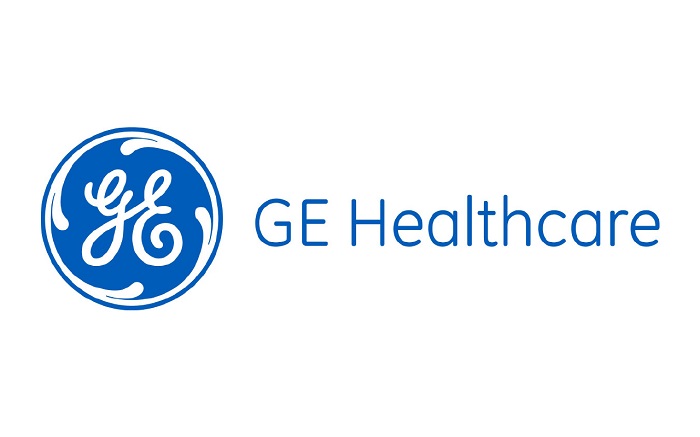Healthcare organizations across the globe have grappled with constant disruption since COVID-19 took hold. The challenges of keeping patients and employees safe while managing resources, virtual care strategies, and clinical and fiscal crises have been crippling at times. Yet, organizations were still able to innovate and adapt, ending 2020 prepared not only to survive the unpredictable road ahead but to innovate, grow, and compete.
In 2021, hospitals and healthcare systems are creating a stronger healthcare ecosystem through flexible, personal care models; smarter, faster, predictive information; an optimized supply chain; and on-point partnerships. Here’s a closer look at how healthcare organizations are securing their future with these success strategies and more.
- Redefining Supply Chain Strategies. COVID-19 exposed critical gaps across supply chain systems and vendor relationships that healthcare organizations must now fix. While organizations randomly collaborated with providers, suppliers, and non-healthcare companies to manage capacity and resources during the crisis, moving forward they will be more discerning. Successful hospitals seek to drive flexibility, self-reliance, trust, and innovation across the supply chain. For example, after supply chains broke down during the pandemic, healthcare organizations began to take back more control, moving once again to a self-distribution model instead of just-in-time delivery from distributors. This allows them to buy in bulk, control distribution, and limit their risk of running out of key items. However, this can be a capital intensive endeavor; organizations may want to apply this procurement strategy sparingly to select supply chain items.
Vendor partnerships are experiencing seismic shifts. The pandemic highlighted the importance of having deep relationships with vendors that could be trusted to deliver supplies at reasonable prices, especially during surges. Hospitals are evaluating vendors more carefully and partnering with those who can strike a strategic balance between price, performance, and trust. They are also developing connections with back-up suppliers who are often smaller and located geographically closer, allowing flexibility, speed, and the ability to maintain inventory levels.

Automation and artificial intelligence (AI) are becoming integral to healthcare supply chains in 2021. These technologies automate and streamline the flow of information and supplies, reducing steps, and freeing personnel from repetitive and manual tasks. They can also identify key trends and support important care initiatives. For example, in population health programs, predictive analytics can alert managers to trending disease states and their associated supply needs. In the future, supply chain managers will increasingly use AI tools to master the new transportation logistics of getting supplies to widely dispersed home care settings.
- Blurred Lines: Competitors Become Partners. Healthcare organizations are embracing cooperative competition, or coopetition, and partnering with their former foes, including big-box stores and nationwide pharmaceutical chains. Organizations like CVS and Walmart can offer primary care, diagnostics, and chronic disease management services at a lower cost. Where some see these companies as competition, savvy healthcare leaders recognize an opportunity to leverage the scale and capabilities of these power players to lower the cost of care, while capturing more patients and core specialty services downstream. When these relationships are working to their fullest potential, they fill gaps in the market by increasing access to care and improving overall community health at a lower cost. For example, if a large retailer provides high-quality lower-cost mammography services in a community, more patients may elect to receive these preventive services, opening the door to a potentially significant flow of new referrals.
- Empowering Healthcare Consumers. Thanks to online retailers and others that have perfected the consumer shopping experience over the last several years, patients have increasingly come to expect the same level of efficiency and transparency from their healthcare providers. They don’t want to wait weeks or months for an appointment or even several days to see test results. Smart healthcare organizations are assessing their current barriers to consumer satisfaction and deploying analytics and patient-centric technologies to improve the convenience, speed, and transparency of care.
- Prioritizing Personalized Care Experiences. As healthcare becomes faster and more convenient due to increased digital interactions, organizations must become more deliberate about acknowledging patients on a personal level before, during, and after the exam. Consumer health research continues to show that personalized care interactions are still the touchstone of patient loyalty. Whether a visit takes place virtually or in person, patients want clinicians to take the time to listen, show they care, and communicate clearly. As healthcare organizations continue to digitize the healthcare experience, clinician training programs with measurable outcomes will need to emphasize how to deliver personalized medicine across all care settings.
- Responding to a Changing Workforce. Cultural shifts, the pandemic, and increasing uncertainty on the world stage are contributing to a changing healthcare workforce. In turn, healthcare organizations are creating workforce policies that emphasize inclusion and diversity. There is strong evidence that diverse teams and inclusive cultures drive better outcomes (especially among diverse patient populations), more effective problem-solving, greater engagement, and higher employee retention. Employers also recognize the need to continue to offer flexible work arrangements and schedules as the pandemic plays out and the gig economy grows. Larger organizations will use their scale to invest in IT tools and programs that give employees greater flexibility to work remotely. COVID-19 also amplified the need to improve employee safety and health. Expect healthcare organizations to ramp up testing of patients and employees, remote working, and virtual care services. They are also rethinking wellness programs and expanding access to mental health services to reduce staff burnout and make jobs more sustainable.
- Going the Distance With Virtual Care. Virtual care visits increased exponentially after the start of the pandemic with Medicare primary care telehealth visits jumping from less than 1 percent to 43 percent between February and April 2020. Since then, the virtualization mindset has clearly taken hold with physicians, clinicians, and consumers. But now the real work begins. Healthcare organizations are starting to align their virtual strategy with the changing needs of their markets, growth goals, and payment models. The goal is to support providers and patients in a more meaningful way: Virtual needs to become the way organizations work versus a disconnected component of the strategy.
- AI Smashes Barriers. Expect to see an even bigger uptick in AI and automation solutions, especially those that improve workflow and care quality, while reducing costs. For example, large organizations are investing in command center software platforms that use AI to harness real-time information to improve the care process. Command center platforms combine systems engineering, predictive analytics, and problem-solving to manage patient flow in and through the health system while aiming to preserve clinical quality, safety, and the patient experience. AI is also being used in key specialty areas such as radiology to reduce redundant tasks, eliminate bias-based reading errors, identify data patterns in images to predict risk, and enhance workflow processes. These solutions reduce patient risk and dosage exposure (with faster image processing) and expedited time to diagnosis and treatment.
- Data Investments on the Rise. Healthcare CIOs say data is becoming the currency of tomorrow. Expect to see large healthcare organizations making big investments to better leverage and monetize the use of data to improve productivity, enhance patient care, and drive additional funding for key programs. Organizations are also starting to monetize data and intellectual property through relationships with nontraditional partners in pharma and Big Tech. They are also forming venture capital funds to manage downside risk related to unpredictable patient volumes and volatility of traditional nonoperating investments.
- Consolidation Continues. In the United States, hospitals will exceed $320 billion in losses in 2020 due to the impact of COVID-19, according to the American Hospital Association.
Hospital consolidation will continue to increase in the face of mounting financial pressures, competition, and regulatory burdens. Smaller hospitals and health systems that can no longer survive alone will increasingly look for protection from larger systems. Mega health system mergers are also on the rise as organizations try to monetize large investments and drive synergies from scale. - Payer Partnerships Evolve. COVID-19 threw off historical utilization rates, forcing employers, providers, and payers to consider utilization, rates, and risk as they model the coming year. The pandemic is also driving new levels of cooperation between payers, employers, and providers as they address tremendous changes. Employers who experienced financial shortfalls are going to increasingly seek partnerships with provider and payer organizations to manage costs and the health of their teams. Providers will continue to collaborate with payers to advance low-cost, high-quality care, with a focus on growing ambulatory and virtual care services to adapt to patients’ evolving needs. Payers will shape their investments and plan designs to drive high-quality virtual care and increasingly recognize home as a path for care, while managing their networks for high acuity and chronic care pathways.




















